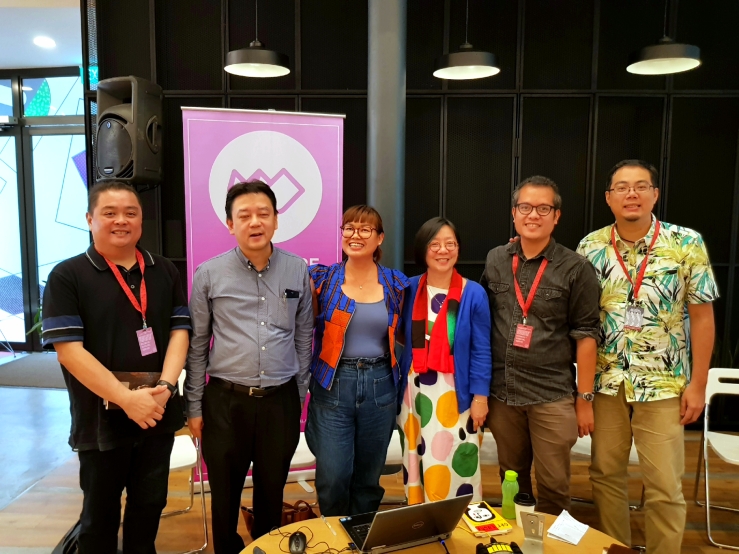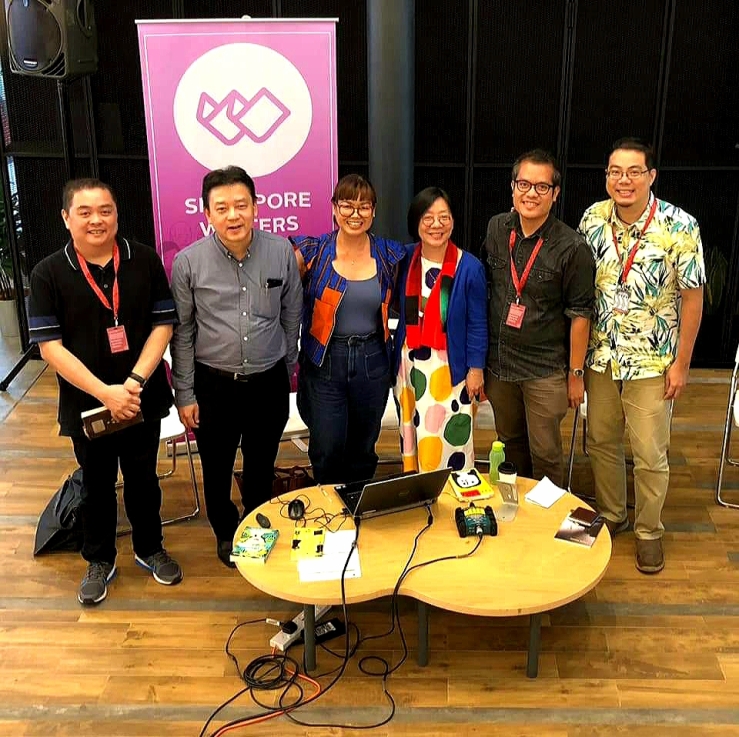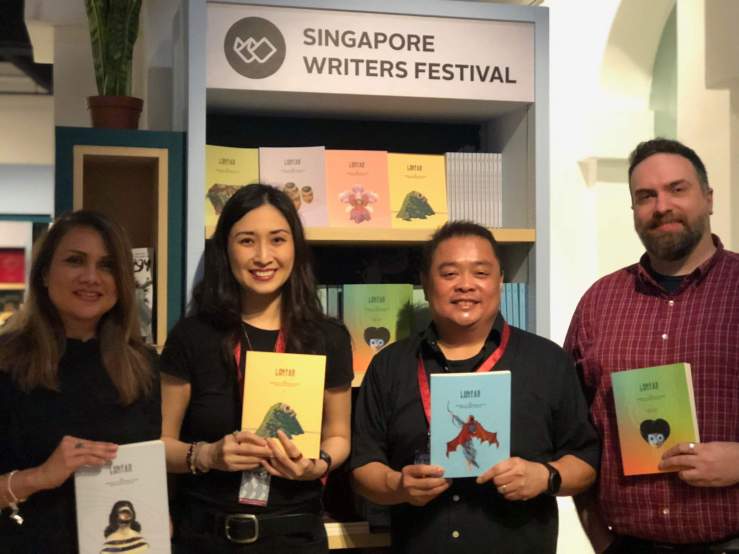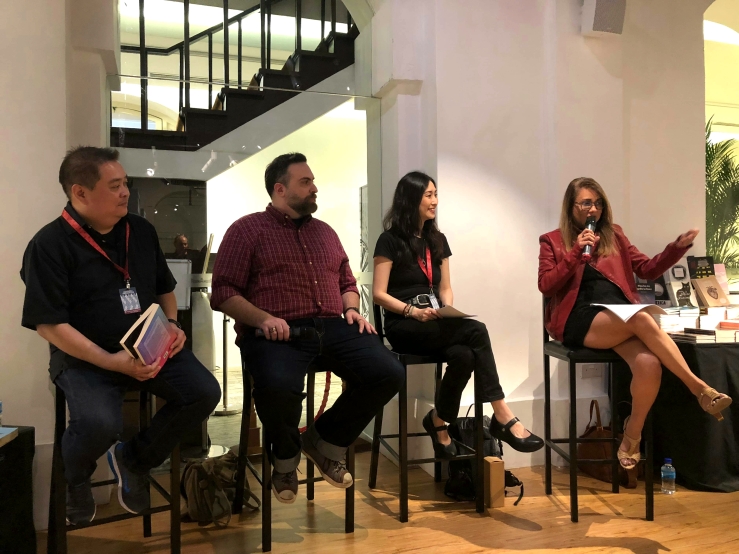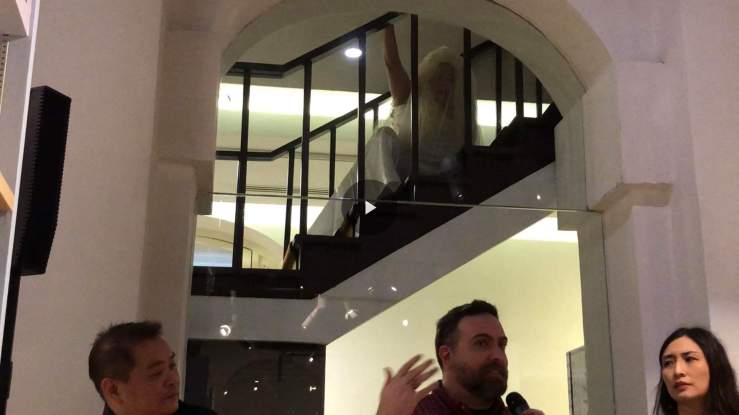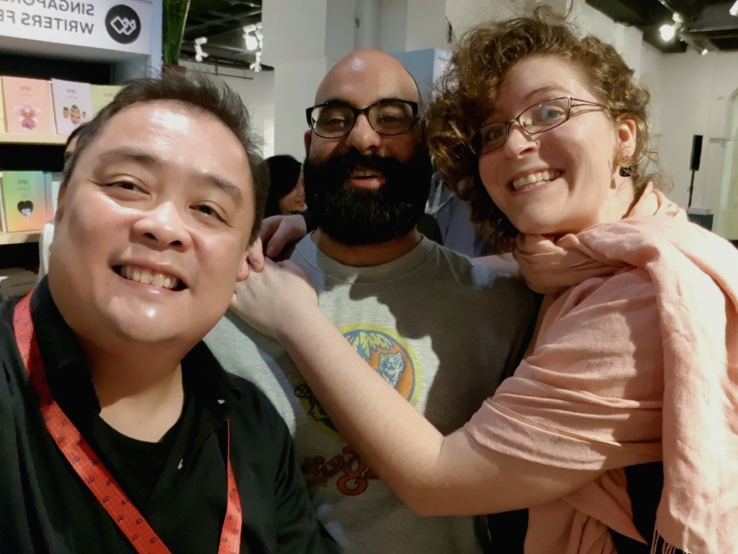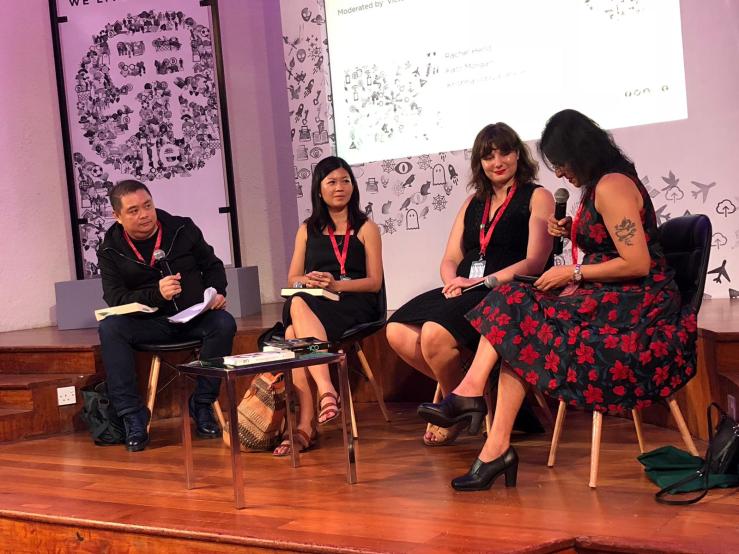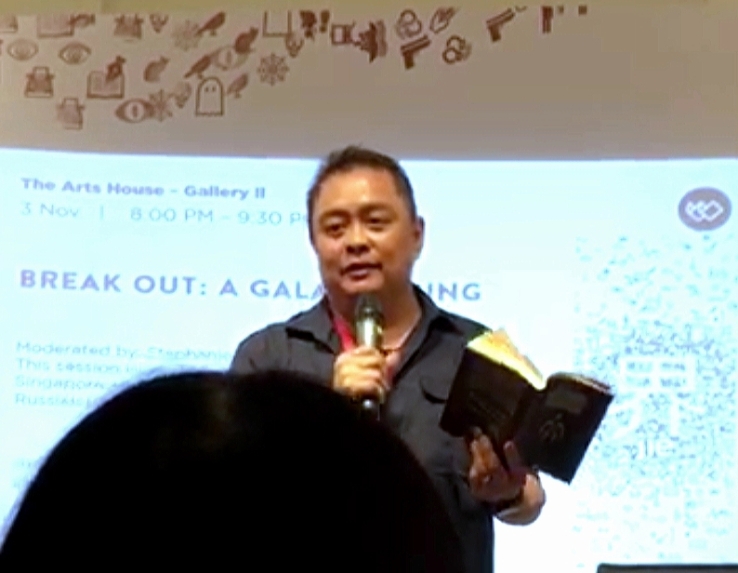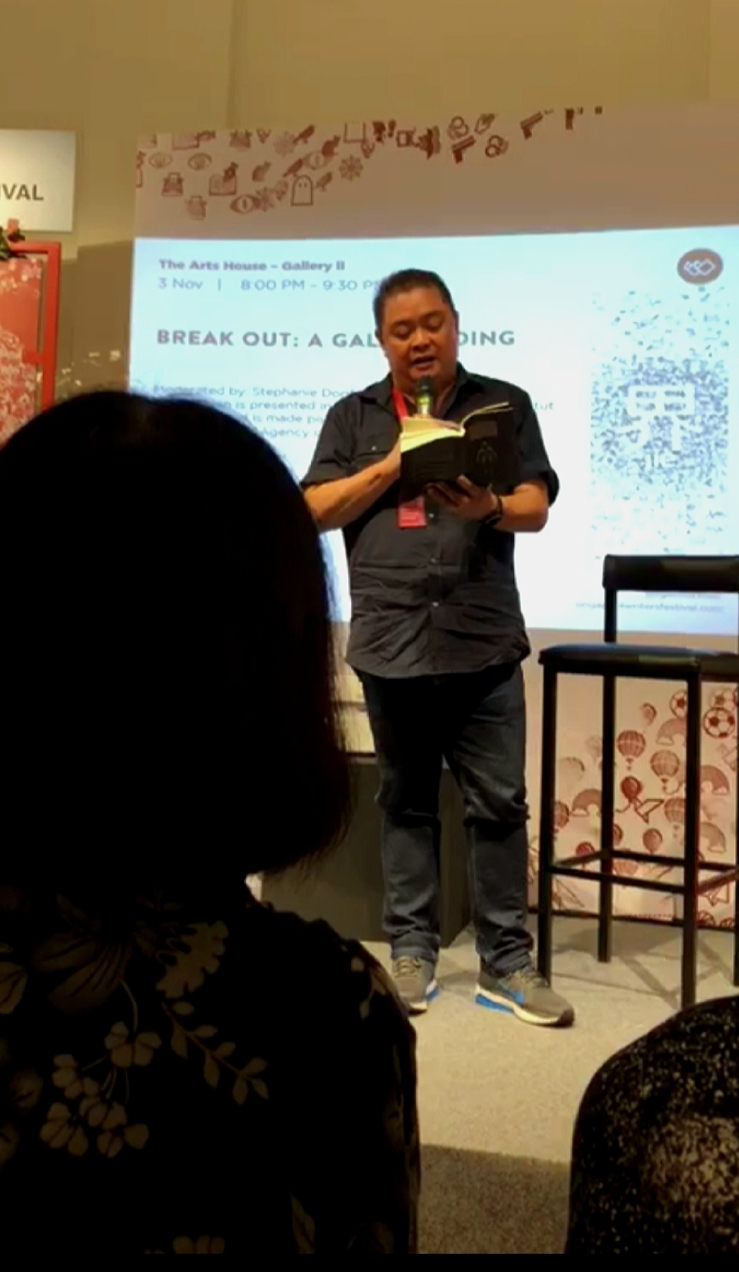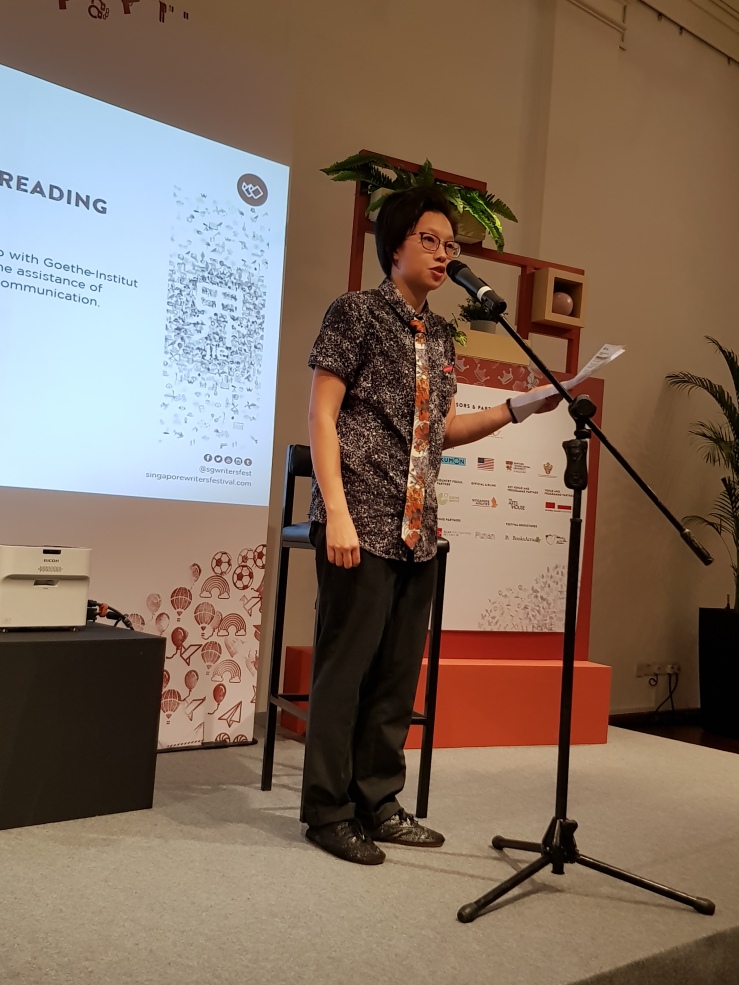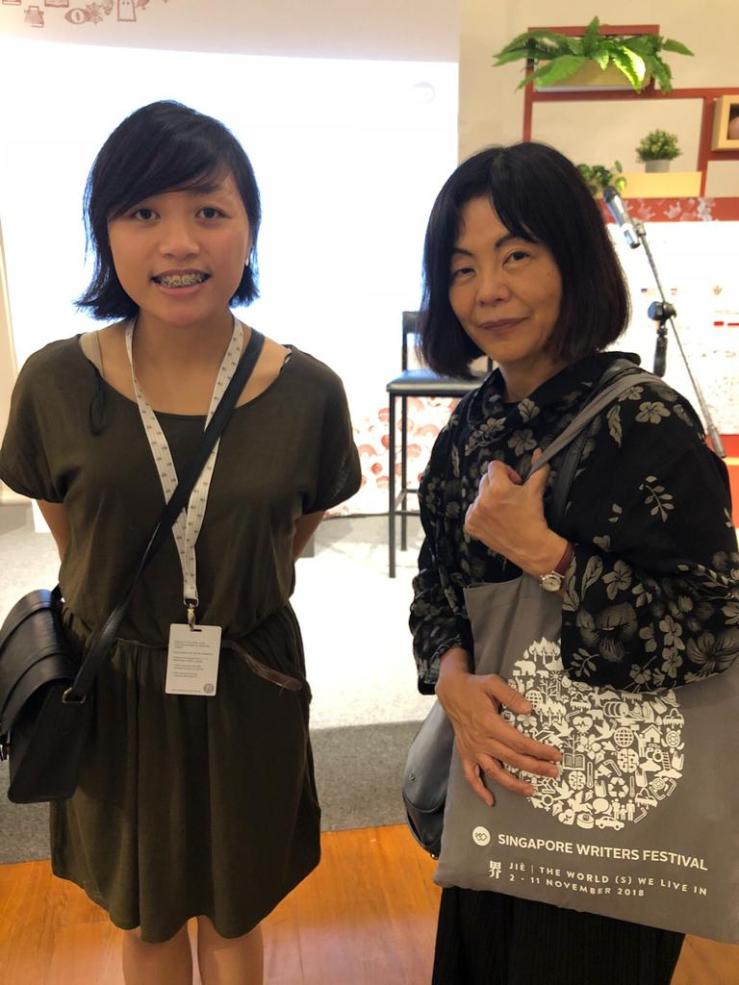Given my really late Monday night slot, I was almost sure no one would come to my solo talk “The Influence of Science Fiction on Modern Science”. Instead, we had a full room at the Artshouse.
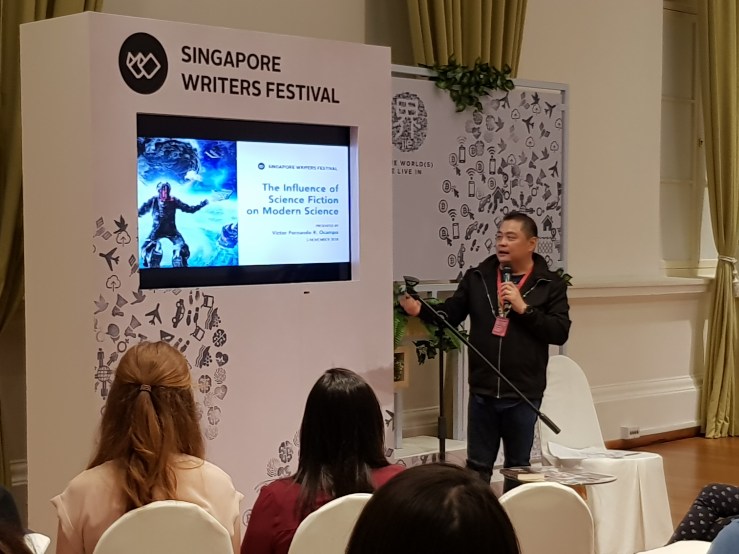
The audience had been promised an informative and entertaining evening. I hope I delivered.
Thank you to my content maven wife Patricia Mulles (for creating a beautiful deck from my notes), the Singapore Writers Festival, and to everyone who took the time to attend.
You can watch a video of my slides below:
Here are my notes draft script for the lecture:
The Influence of Science Fiction on Modern Science
05 Nov, Monday 8.30pm – 9.30pm (60 Minutes) Venue: The Arts House, Living Room
What were the science fiction works that came before modern science? Published in 1818, Mary Shelley’s Frankenstein has been argued to be the first sci-fi novel. Since then, authors such as Ray Bradbury and Arthur C. Clarke have imagined what science could achieve through their writing. In this Classroom Talk, sci-fi author Victor Fernando R. Ocampo explores the relationship between literature and the sciences, and how science fiction has actually inspired, and continues to inspire, the science of today.
- A Bit About Me
Good evening.
My name is Victor Fernando R. Ocampo and I am a Singapore-based Filipino Writer of Speculative and Experimental Fiction. In my day job I work with both Artificial Intelligence and Telecommunication systems. I have been part of companies like Yahoo, the SIM card manufacturer Gemalto, the ethical hackers Cellebrite, and Singapore Technologies, where I worked on a number of Defense projects.
- Why Fiction is Important: The Role of Fiction
“Large numbers of strangers can cooperate successfully by believing in common myths. Any large-scale human cooperation – whether a modern state, a medieval church, an ancient city or an archaic tribe – is rooted in common myths that exist only in people’s collective imagination.” ― Yuval Noah Harari, Sapiens: A Brief History of Humankind (2011)
Harari argued that the ability to create fiction was what made Homo sapiens the apex species and allowed mankind to conquer the Earth.
Inside every work of fiction is a dream and we dream to achieve goals or solve problems.
- Science as a Plot Device – What is Science Fiction?
Science fiction stories puts our hard, tangible Scientific knowledge into the cultural context of the real world.
The funny thing about SF is that there is no universally accepted definition for Science Fiction. In fact, grand master Damon Knight once said that “Defining Science Fiction results only in bloody knuckles.”
- Foreshadowing vs. Inspiration – Something between an educated guess and a coincidence
The subject of this talk is very specifically books or works of fiction that have directly inspired a specific scientific advancement or technology.
However there are many more instances where they seem to have the predicted the future.
- Frankenstein or, the Modern Prometheus (1818) was inspired by the emerging science of Galvanism (the contraction of a muscle that is stimulated by an electric current). It in turn presaged Organ Transplants and Defibrillator technology.
- 2001 A space odyssey presented a compelling case for Video Calling. It also inspired the tablet and voice control
- Fahrenheit 451 by Ray Bradbury in 1953 presaged Blue Tooth Technology in the wireless earpieces used by the “Fire Men” to coordinate where they would burn books.
- Looking Backward: 2000–1887 by Edward Bellamy (1888) contained the first description of Credit and Debit Cards. Read chapters 9, 10, 11, 13, 25, and 26, but these actually function like modern debit cards. It was also the first to envision door-to-door delivery and cooperatives like Sam’s Club and NTUC.
“… a credit card issued him with which he procures at the public storehouses, found in every community, whatever he desires whenever he desires it. This arrangement, you will see, totally obviates the necessity for business transactions of any sort between individuals and consumers.” – Edward Bellamy, Looking Backward, 1888
- (1) Top 5 Tech – The Submarine
USS Nautilus (SSN-571) – USS Nautilus (SSN-571) was the world’s first operational nuclear-powered submarine and the first submarine to complete a submerged transit of the North Pole on 3 August 1958. It was named after the fictional submarine from 20,000 Leagues Under The Sea.
However Verne’s book did not actually inspire the creation of the submarine. The first submersible of whose construction there exists reliable information was designed and built in 1620 by Cornelis Drebbel, a Dutchman in the service of James I of England. It was propelled by means of oars.
in 1800, American Robert Fulton invented a hand-cranked submarine and tested it in the Seine river in Paris. It is often considered to be the first practical submarine. Fulton’s Nautilus inspired Jules Verne to give his fictional creation the same name.
A model of the French submarine Plongeur (launched in 1863) was displayed at the 1867 Exposition Universelle, where it was studied by Jules Verne. This submarine was the direct inspiration for the book “Twenty Thousand Leagues Under the Seas: A Tour of the Underwater World” which was published in 1870.
The Nautilus’ original inspiration, the Plongeur, was a very primitive craft that ran on a compressed air engine and did not have a good system for retaining air. Jules Verne worked all of these kinks out in his story by incorporating ballasts as refillable air pumps and using electric motors.
Verne’s book inspired Spanish engineer Narcís Monturiol to design the first air–independent and combustion–powered submarine, the Ictineo II.
- (2) Top 5 Tech – Atomic Power
“The World Set Free” was a novel written in 1913 and published in 1914 by H. G. Wells. It originally appeared first in serialized form with a different ending as A Prophetic Trilogy, consisting of three books: A Trap to Catch the Sun, The Last War in the World and The World Set Free.
Wells was inspired to write this book after reading the work of William Ramsay, Ernest Rutherford, and especially Frederick Soddy, who discovered the disintegration of uranium). Soddy would later praises “The World Set Free” for its prescient views on Atomic power.
Wells’s novel had directly influenced the development of nuclear weapons, as the physicist Leó Szilárd read the book in 1932 — the same year the neutron was discovered. In 1933 Szilárd conceived the idea of neutron chain reaction, and filed for patents for a Nuclear reactor on it in 1934 with Enrico Fermi. In late 1939 wrote the letter for Albert Einstein’s signature that resulted in the Manhattan Project that built the atomic bomb.
- (3) Top 5 Tech – The Internet
“Dial F For Frankenstein” was a 1961 short story by Arthur C Clark that inspired Sir Timothy John Berners-Lee to create the World Wide Web.
It foretold an ever-more-interconnected telephone network that spontaneously acts like a newborn baby and leads to global chaos as it takes over financial, transportation and military systems”
Other notes from Tech by Clarke –
- Clarke was the first to suggest that satellites which remain at a fixed point relative to Earth could be used for worldwide communications. The geostationary orbit is now known as the “Clarke orbit”.
- In his novel Rendezvous With Rama, Clarke created “Project Spaceguard”, a system to track asteroids that might collide with Earth. When such a system was set up in 1996, it was called “Spaceguard”, in homage.
My favourite prediction:
In The Fountains of Paradise (1979), a “space lift”, a geostationary satellite tethered to the Earth’s surface, allowed people and goods to travel up and down without having to blast into orbit. Carbon nanotubes may make the 22,000-mile-long tether feasible.
8. (4) Top 5 Tech – Virtual Worlds or the Metaverse
Snow Crash by Neal Stephenson, published in 1992 was the inspiration for Second Life.
The Metaverse, a phrase coined by Stephenson as a successor to the Internet, constitutes Stephenson’s vision of how a virtual reality-based Internet might evolve in the near future. Resembling a massively multiplayer online game (MMO), the Metaverse is populated by user-controlled avatars as well as system daemons.
The Metaverse is a collective virtual shared space, created by the convergence of virtually enhanced physical reality and physically persistent virtual space, including the sum of all virtual worlds, augmented reality, and the internet.
Second Life creator Philip Rosedale formed Linden Lab with the intention of developing computer hardware to allow people to become immersed in a virtual world. He initially credited Snowcrash as an inspiration in many early interviews but has since retracted this for legal reasons.
- (5) Top 5 Tech – The Mobile Phone
“Star Trek” by Gene Roddenberry debuted in 1966
The first handheld cellular mobile phone was demonstrated by John F. Mitchell and Martin Cooper of Motorola in 1973, In 1983, the DynaTAC 8000x was the first commercially available handheld mobile phone.
- The Relationship between Science Fiction and Real Science
- Science fiction authors are inspired by actual scientific and technological discoveries
- Scientists, in turn, often derive inspiration from the imaginative possibilities that exist in fictional worlds
- The inventions in fictional worlds seldom transition to the real world—at least not in the way they are first imagined.
- Science Fiction and the pursuit of Science form an endless loop that keeps iterating to solve the problems of human existence.
- Conclusion
If you are a scientist– READ MORE SCIENCE FICTION. Science fiction is required reading for a lot of schools like MIT. There are actually think thanks that get paid to read science fiction to mine it for ideas.
If you are a writer – DON”T BE AFRAID To use SCIENCE AND TECHNOLOGY AS INSPIRATION to solve the deep and existential questions of humanity. The issue with our education system is that disseminated knowledge is not the best way to learn something. Nobody learns by passive consumption. People learn when they want to learn and they are most attracted to stories.
Great science fiction stories puts our hard, tangible knowledge into the cultural context of the real world. The best SF stories have one job: to evoke a sense of curiosity in you and to teach you to enjoy learning for its own sake.
I personally feel that Science Fiction is the most important genre of literature, in the sense that it doesn’t only educate, it forces us to constantly dream of the future. And if we cannot dream, we cannot change.
So, read and, if you have the passion, write some Science Fiction today.
Thank you very much for listening on my thoughts on this topic. Now I’d like to hear from you.
